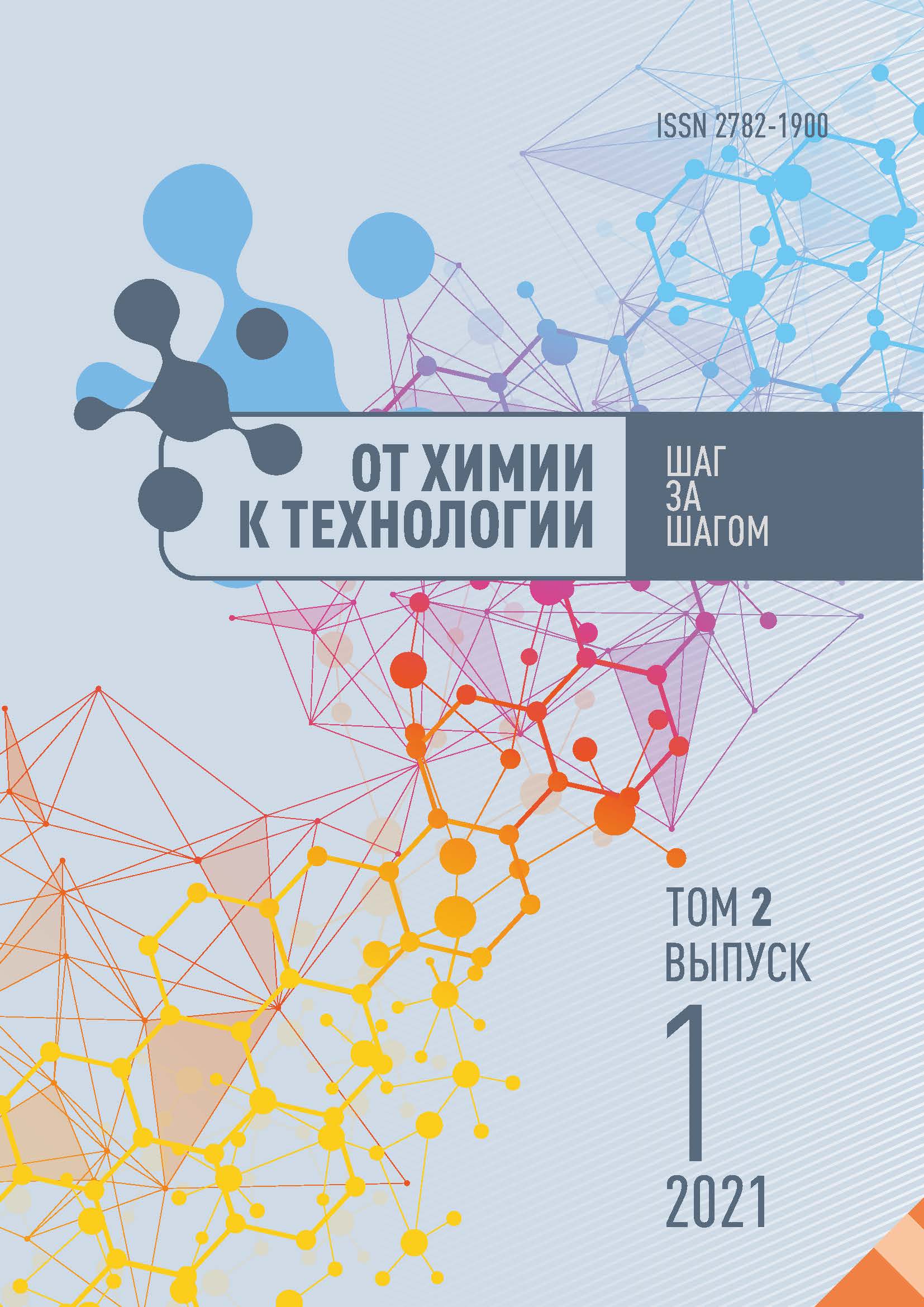Ярославль, Ярославская область, Россия
Ярославль, Ярославская область, Россия
Ярославль, Ярославская область, Россия
Based on the analysis of the literature data, it is determined that as a result of the expanding directions of application of the magnetic fluid, more and more magnetite is required to obtain it. The most common method of obtaining magnetite by chemical condensation makes magnetic fluid very expensive, one liter of which is sold for more than 500 USD. To reduce its cost, the paper proposes the methods of high-temperature reduction of iron-containing wastes to magnetite, which are metallurgical dust caught by electrofilters. As a reducing agent the waste activated carbon and carbon black (soot) are used the codes of which are included in the Federal classification catalog of waste (FKKO) and reflect a significant amount of their formation. After mixing iron-containing waste, activated carbon waste and carbon black, they are gradually heated to a temperature of 900 °C. These conditions create the possibility of the appearance of ferrous iron ions, which, occupying vacant places in the crystal lattice of iron oxide (III), contribute to the formation of magnetite. The magnetite was identified by X-ray technique and evaluated by the indicator of saturation magnetization in comparison with the natural magnetite appeared to be almost identical. The resulting magnetites were dissolved in hydrochloric acid and precipitated with ammonium hydroxide. Repeated determination of saturation magnetization did not show any difference in its level. In the suspension of magnetite, a dispersant in the form of oleic acid and a dispersion medium – kerosene was introduced during heating and stirring. The saturation magnetization and stability of the obtained magnetic fluid satisfied its application for water purification from oil and oil products spill.
magnetite, metallurgical dust, waste of carbon black, sediment of water de-Ironing station, magnetic liquid
1. Morozov N.A., Kazakov Yu.B. Nanodisperse magnetic fluids in engineering and technology. Ivanovo: ISEU, 2011. 264 p. (in Russian).
2. Gordeev B.A., Maslov G.V., Okhulkov S.N., Osmekhin A.N. On Developing a Magneto-rheological Transformer That Operates in Orthogonal Magnetic Fields. Journal of Machinery Manufacture and Reliability. 2014. V. 43. N 2. P. 99–103. DOI:https://doi.org/10.3103/S105261881402006X
3. Belyaev E.S., Ermolaev A.I., Titov E.Yu., Tumakov S.F. Magnetorheological fluids: technologies of creation and application. Nizhnii Novgorod: NSTU named after R.E. Alekseeva, 2017. 94 p. (in Russian).
4. Khoang Ch.T., Yurmazova T.A., Vaitulevich E.A. Magnetite with modified surface for water treatment. Izvestiya Tomskogo politekhnicheskogo universiteta. Inzhiniring georesursov. 2019. V. 330. N 8. P. 163-172. DOI:https://doi.org/10.18799/24131830/2019/8/2222 (in Russian).
5. Lebedev A.V., Lysenko S.N., Gileev V.G. The magnetic liquid stabilized with polymethylsiloxane remains liquid without carrier medium. Kolloidnyi zhurnal. 2020. V. 82. No. 3. P. 339-345. DOI:https://doi.org/10.31857/S0023291220030064 (in Russian).
6. Pshenichnikov A.F., Elfimova E.A., Ivanov A.O. Magnetophoresis, Sedimentation, and Diffusion of Particles in Concentrated Magnetic Fluids. Journal of Chemical Physics. 2011. V. 134. N 18. P. 184508 DOI:https://doi.org/10.1063/1.3586806
7. Antonenko T.S., Brik A.B., Ponomar V.P., Dudchenko N.A. Conversion of weakly magnetic minerals (hematite, goethite) into magnetite in an aqueous medium of iron (II) salts. Mineralogichnii zhurnal. 2018. V. 40. N 2(196). P. 36-44. DOI:https://doi.org/10.15407/mineraljournal.40.02.036 (in Russian).
8. Kalaeva S.Z., Makarov V.M., Shipilin M.A., Bazhanova A.G., Zakharova I.N., Yamanin I.A., Ershova A.N. Synthesis and application of magnetic fluid. Fiziko-khimicheskie i prikladnye problemy magnitnykh dispersnykh nanosistem: Conference Proceedings. September 14-17 2009. Stavropol': SSU, 2009. P. 7-10 (in Russian).
9. Albagachiev A.Yu., Danilov V.D. Magnetic fluid in the regime of hydrodynamic lubrication of spherical surfaces. Vestnik Bryanskogo gosudarstvennogo tekhnicheskogo universiteta. 2016. N 3(51). P. 90-93. DOI:https://doi.org/10.12737/22017 (in Russian).
10. Kazakov Yu.B., Stradomskii Yu.I., Morozov N.A., Perminov S.M. Sealers based on nanodispersed magnetic fluids and their modeling. Editor: Yu.B. Kazakova. Ivanovo: ISEU, 2010. 180 p. (in Russian).
11. Morozov N.A., Kazakov Yu.B. Nanodisperse magnetic liquids in engineering and technology. Ivanovo: ISEU, 2011. 264 p. (in Russian).
12. Pshenichnikov A.F., Lebedev A.V., Radionov A.V., Efremov D.V. Magnetic fluid for operation in strong gradient fields. Kolloidnyi zhurnal. 2015. V. 77. N 2. P. 207-213. DOI:https://doi.org/10.7868/S0023291215020159 (in Russian).
13. Kurbatov A.A., Morozov N.A., Stradomskii Yu.I., Shchelykalov Yu.Ya. Modeling of magnetic fluid regeneration process from magnetized petroleum products. Vestnik IGEU. 2003. Iss. 1. P. 26-30 (in Russian).
14. Solov'eva O.Yu., Kalaeva S.Z., Makarov V.M., Korotaeva T.A., Ershova A.N. Disposal of magnetized petroleum products in rubber compounds and rubbers. Ekologiya i promyshlennost' Rossii. 2010. N 12. P. 22-23 (in Russian).
15. Makarov V.M., Kalaeva S.Z., Markelova N.L., Tyukina L.A., Dubov A.Y. Production of nanodisperse magnetite for polymer compositions to be used for various purposes. Magnetohydrodynamics. 2018. V. 54. N 1-2. P. 141–145. DOI:https://doi.org/10.22364/mhd.54.1-2.25
16. Ershova A.N., Kalaeva S.Z., Makarov V.M., Zakharova I.N., Gushchin A.G., Shipilin M.A., Shipilin A.M. Obtaining magnetic fluids for medical technologies. 14 Mezhdunarod. Plesskaya konf. po nanodispersnym magnitnym zhidkostyam, Conference Proceedings. Ples, Sept., 7-10, 2010. P. 270-273 (in Russian).
17. Kalaeva S.Z., Ershova A.N., Gushchin A.G., Makarov V.M. New ways of obtaining magnetic fluids for innovative medical technologies. XVI Conference Tekhnologicheskoe obrazovanie kak faktor innovatsionnogo razvitiya strany, Conference Proceedings. October, 4-8, 2010. Yaroslavl: YSPU named after K.D. Ushinskiy, 2010. P. 276-277 (in Russian).
18. Makarov V.M., Kalaeva S.Z., Kruchina M.A., Markelova N.L., Zakharova I.N., Ezhov A.A., Shipilin A.M. Production of magnetite-containing composite based on iron hydroxide from underground waters to synthesize magnetic fluids. Magnetohydrodynamics. 2018. V. 54. N 1-2. P. 137–140. DOI:https://doi.org/10.22364/mhd.54.1-2.24







